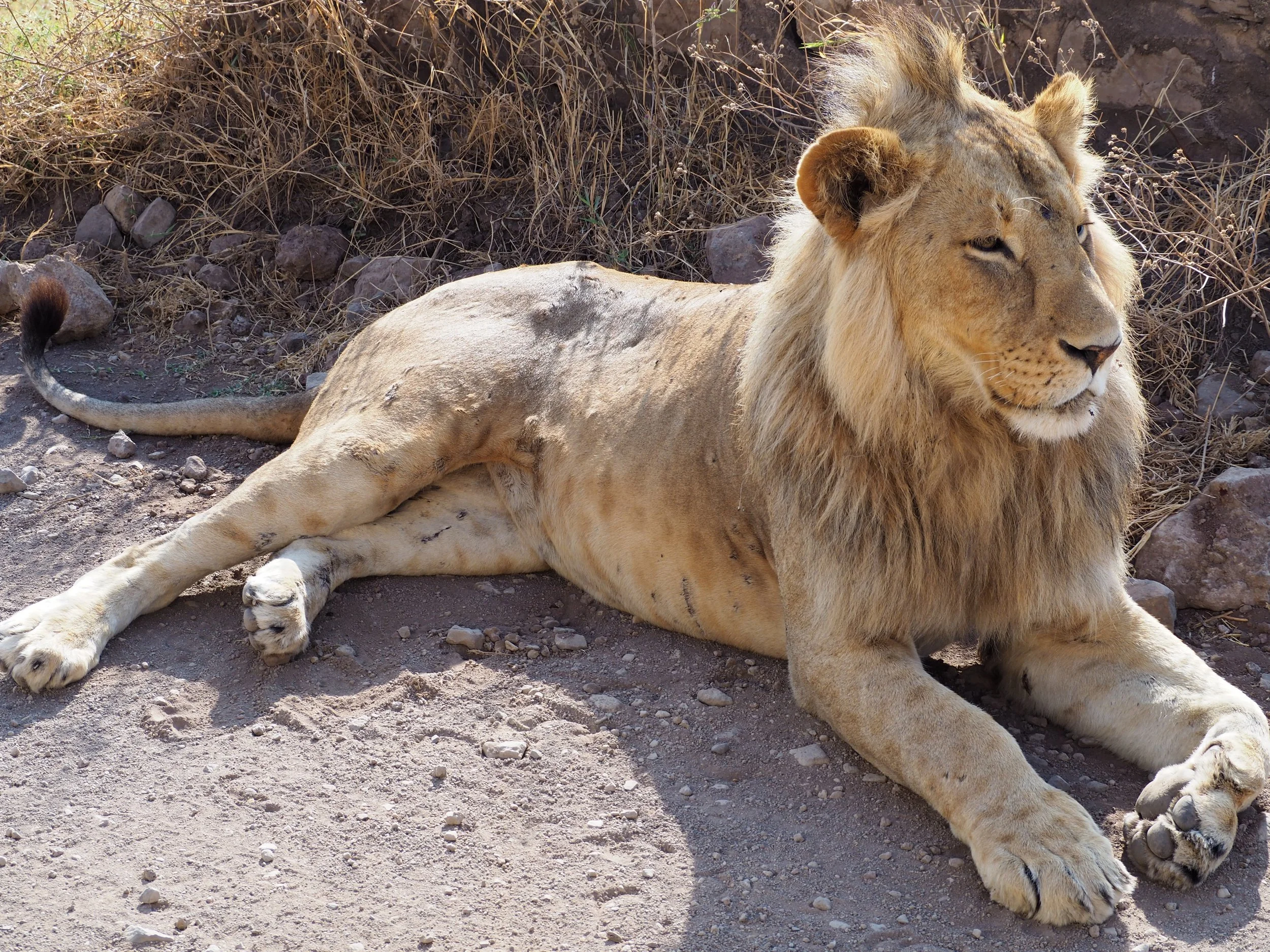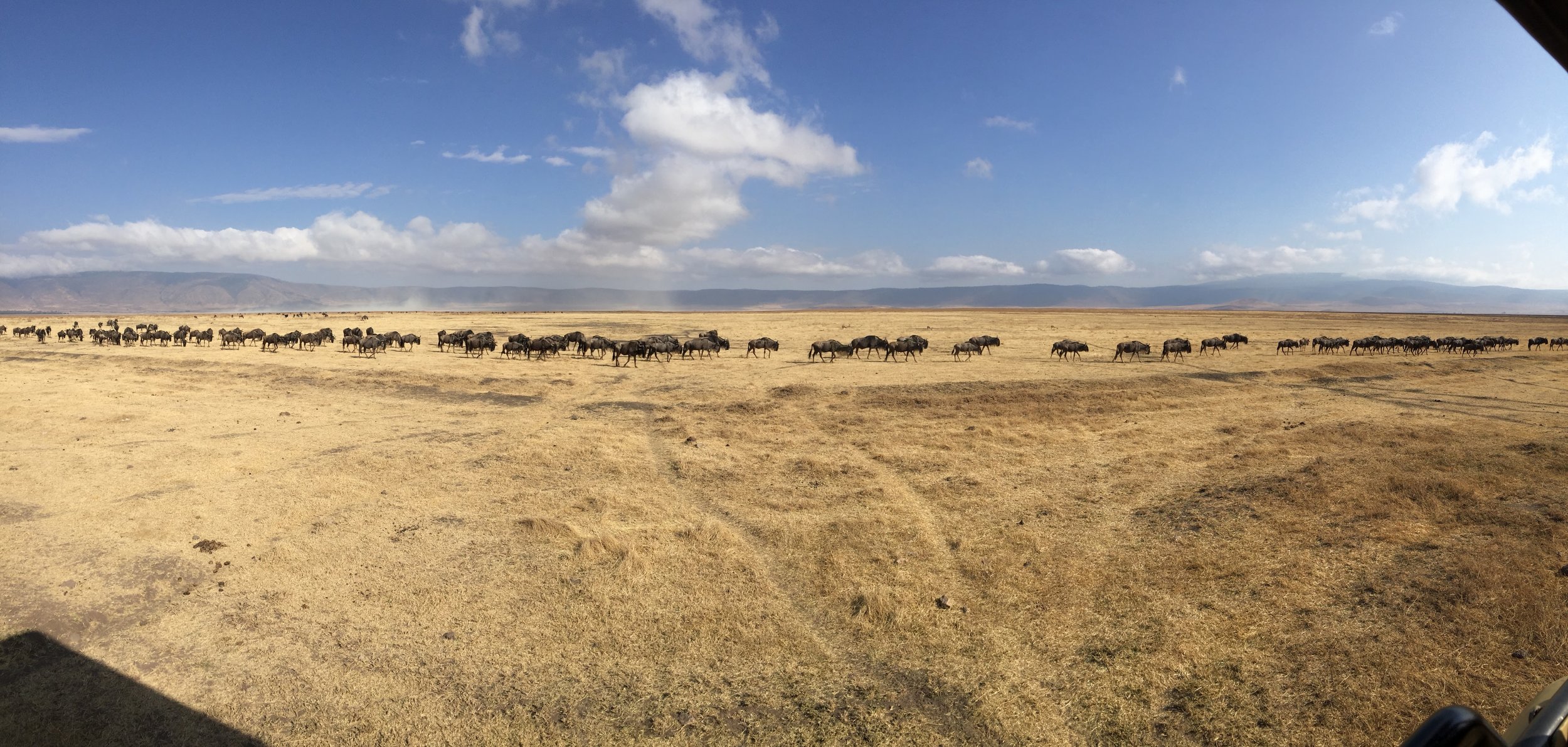Our last day on safari began shivering in the darkness, but soon a shimmering orange ball rose above the thin layer of clouds and illuminated our campsite perched on the rim of Ngorongoro crater.
A quick breakfast later we were descending down the angled slopes of the world’s largest unbroken caldera. Spanning 15 by 19 kilometers, Ngorongoro is home to the world’s densest amalgamation of large mammals, rivaling Serengeti for the best safari experience in Tanzania.
Along our left side yellowing grasses sloped upwards towards dark brown soil scattered with trees, while above us a perfect blue sky hung suspended in the air. Meanwhile on the right, a thick layer of billowing clouds ensconsed the upper rim of the crater wall, reflecting the sunlight into a bright haze across our view.
Instantly upon hitting the crater floor, our guide took off for the area where a rhinocerous had been spotted that morning. The most elusive of Africa’s legendary big five, there are now just 36 rhinos in the Ngorongoro conservation area, down from hundreds in the late 19th century. A single rhino horn can fetch more than $1 Million USD on the black market, enticing poachers despite the threat of the death penalty if caught.
Amongst the endless black silhouttes on the horizon, we finally spotted the massive beast, betrayed by his double horned snout.
While we peered through binoculars and zoom lenses to catch a closer look, he took off at a sprint to scare away some gazelle, surprising us with his speed and grace.
From this viewpoint we could also begin to appreciate some of the biodiversity around us. Gazelles, zebras, and wildebeest grazed by the hundred, while a few solitary male elephants plodded slowly across the plain.
Compared to the animals present in the other parks we had visited, the sheeer density of the crater blew me away. Here predators and prey coexisted within yards of each other; gazelles were unpretrubed by the presence of lions and wildebeests nonchalantly made room for a passing elephant.
A flourishing hyena population serves on an important level of the food chain here, scavenging the kills of larger predators and also hunting in packs under the cover of night.
We roamed straight through the center of the crater, taking in the vast panorama of sloping walls above us while keeping our eyes peeled for signs of life amongst the grasses. Here warthogs roamed in packs, their tough tusks digging up grasses. Lone ostriches strutted from here to there, posturing their necks in every direction.
Countless species of birds soared high above and came down to perch near the roads, offering spectacular impressions of the diversity that natural selection creates over tens of millions of years.
Eventually our eyes spotted the impressive big cats; a pair of female lions splayed in a ditch next to the road while their paramour rested a few steps further afield.
The Ngorongoro lions were reduced to a frighteningly small gene pool by a tick invasion in 2002 that hindered reproductive efforts, but our expedition proved that the pride has rebounded well. Later on we spotted almost a dozen cubs, mothers, and male lions spread out over a wide swath of land.
From this viewpoint we could see lions lounging, buffalo, zebras, gazelle, and wilegeest grazing, a bloat of hippos deep in mud, and no less than a dozen unique species of birds encircling a pond. This environment served to further our amazement at the splendors of mother nature on display in Ngorngoro crater.
For a quick break, we stopped in at the hippo ppol on the edge of the crater’s massive swamp. A tumultuous breeze came down the hillsides and rippled across the surface of the magnificent blue lake, forcing the hippos to stay submerged as often as possible.
Having seen the dry savannah and the murky wetlands, the only ecosystem of the park left to explore was the lerai forest. Trees protected us from a punishing wind, greeting us with crisp clean air. These acacia trees also provide the soft branches needed for baby elephants to feed on, so it came as no surprise when we stumbled on a herd of almost 20 eating in a clearing.
The size and quantity of these mammals was an excellent ending to our incredible journey into one of earth’s most unique biospheres. By the end of five days living out of a jeep, it was high time for a warm meal and a comfortable bed. A long day of driving back towards town was ahead of us, but we were ready for the next adventure.















